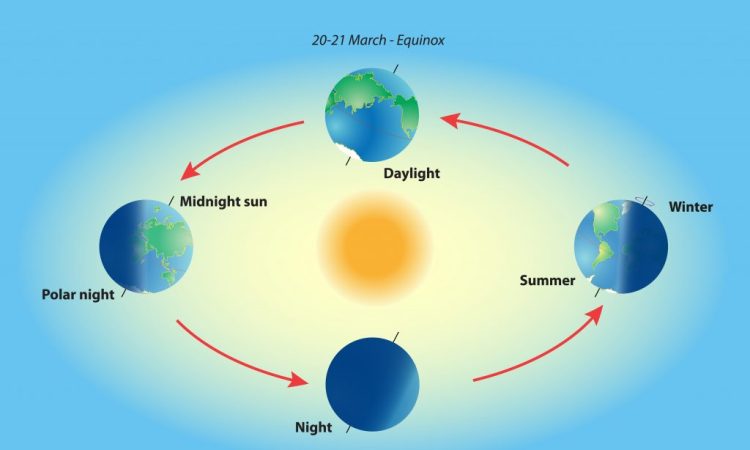
At 2.43pm today 22 September there will be the Autumn Equinox. Let’s find out what it is, the difference with the solstice and what is meant by precession of the equinoxes
Autumn has arrived: at 2.43pm Italian time, today 22 September 2022 will be the Autumn Equinox for us inhabitants of the Northern Hemisphere (spring in the Southern Hemisphere). THE’equinox (from the Latin equal night) is that moment of the rotation of the around the Sole where the latter is located at the zenith of the equator. The Earth’s rotation axis is inclined on average by 23°27′. Therefore the light from the Sun never impacts at the same angle but varies constantly. During the equinoxes the Earth’s rotation axis is perpendicular to the direction of the sun’s rays and therefore the daytime duration is the same as the nighttime one. Obviously for thenorthern hemispherethe September equinox marks the arrival of autumn while the southern equinox marks the beginning of spring. The opposite however happens with the March equinox.
Advertisement
I solsitizi
Literally the solstice it is the moment in which the Sun reaches, in its apparent motion along the ecliptic, the point of maximum or minimum declination. This means that i solstices in summer and winter they are respectively the longest and shortest day of the year. Like the equinox, the solstice is due to the inclination of the Earth’s rotation axis with respect to theecliptic (apparent path that the Sun takes in a year compared to the background of the celestial sphere). The term solstice comes from Latin solsticeor the ‘Sun stops‘, because, depending on the solstice, the Sun stops rising (or falling) with respect to the celestial equator and seems to stop on these days. The reaches the maximum value of positive declination in the month of June (marking the beginning of boreal summer and austral winter) and the maximum value of negative declination in December (beginning of boreal winter and austral summer).
The precession of the equinoxes
The precession of the equinoxes it is one of the movements of the Earth that causes the orientation of the rotation axis to change with respect to the place fixed. The Earth’s axis undergoes a precession (similar to a spinning top) due to two factors: the shape of the (oblate spheroid, protruding at the equator) and also the gravitational forces of both the Moon and the Sun. The precession motion completes a complete revolution approximately every 25,772 years: in 12,000 years the polar star will be .
Read more:

